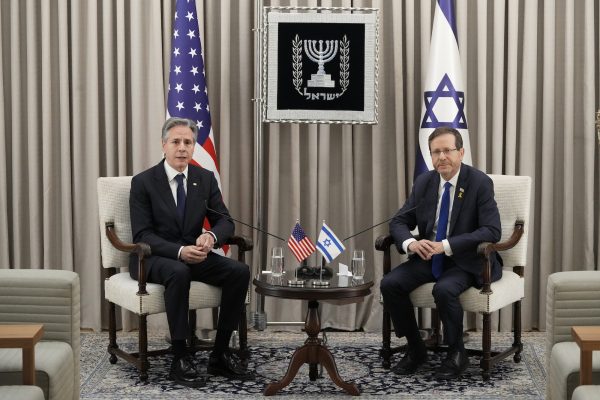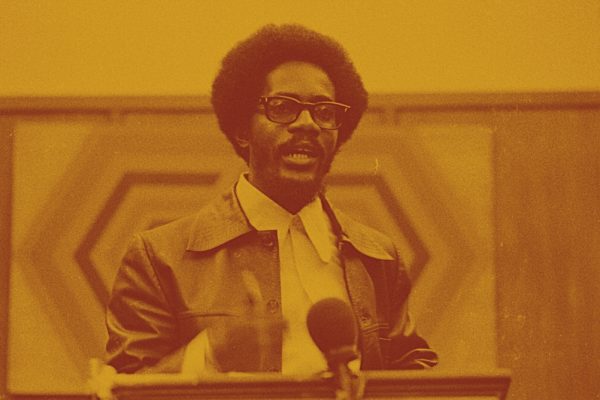I
Starting last fall, we began to hear that U.S. policymakers were looking into Japan and Germany after World War II as examples or even models of successful military occupations. In the case of Japan, the imagined analogy with Iraq is probably irresistible. Although Japan was nominally occupied by the victorious “Allied powers” from August 1945 until early 1952, the Americans ran the show and tolerated no disagreement. This was Unilateralism with a capital “U”—much as we are seeing in U.S. global policy in general today. And the occupation was a pronounced success. A repressive society became democratic, and Japan—like Germany—has posed no military threat for over half a century.
The problem is that few if any of the ingredients that made this success possible are present—or would be present—in the case of Iraq. The lessons we can draw from the occupation of Japan all become warnings where Iraq is concerned.
It is difficult for most people today to imagine what the situation was like in 1945, in the wake of the Second World War. One must remember that Japan had been engaged in aggression in Asia since 1931, when Imperial Army militarists launched a successful takeover of Manchuria. Open war against China began in 1937, and the great and foolhardy “preemptive” strike against Pearl Harbor took place in December 1941—in the context of a Japanese declaration of war against the United States and European powers with colonies in Southeast Asia. Japan’s aggression was as open and audacious as that of its Axis allies Germany and Italy.
Just as is the case with Europe and the Soviet Union, we will never have an exact reckoning of the death toll of the war in Asia. China bore the brunt of Japanese aggression. Estimates vary and have tended to become inflated in recent years, but the number of Chinese who died directly or indirectly as a consequence of the war is probably in the neighborhood of fifteen million. In countries like the Dutch East Indies—known today as Indonesia—estimates of fatalities range from one million to several million. In their final frenzy in the Philippines the emperor’s men massacred around one hundred thousand civilians in Manila alone. U.S. battle deaths in the Pacific War also were approximately one hundred thousand. Japan’s own war dead numbered around two million servicemen and another one million civilians—roughly four percent of the total population at the time.
This was a charnel house in which the Japanese not only savaged others but were themselves savaged by war and militarism and their own repressive leaders. So, the dream that everyone embraced once Japan had been defeated was of a nation that would never again bring such havoc on its neighbors or, indeed, on its own people. “Demilitarization” became the watchword of the time, and it was argued that this could only be enduring if the country was “democratized” as well, so that irresponsible leaders could not repeat these horrors.
When I say that “everyone” embraced this vision of a demilitarized, democratized Japan, I have in mind not merely the victorious Allied nations but also the Asian peoples who had been so grievously victimized by the Japanese war machine—many of whom remained at war’s end colonial subjects of the British, French, Dutch, and Americans. I also have in mind the great majority of the Japanese, who found themselves not only bereaved but also living in a country utterly devastated by a miserable, losing war. Even people who are familiar with the atomic bombings of Hiroshima and Nagasaki that preceded Japan’s surrender in August 1945 often are unaware that the U.S. terror-bombing raids that came before them—aimed primarily at destroying civilian morale—had pulverized large portions of 64 other major cities. Tokyo, for example, had been mostly reduced to rubble.
It is important to keep all this in mind when we begin to talk about drawing lessons from Japan that might be applicable to Iraq after any projected U.S. hostilities. The postwar occupation of Japan possessed a great intangible quality that simply will not be present in the event of a U.S. war against Iraq. It enjoyed virtually unquestioned legitimacy—moral as well as legal— in the eyes of not merely the victors but all of Japan’s Asian neighbors and most Japanese themselves. Japan had been at war for almost fifteen years. It had declared war on the Allied powers in 1941. It had accepted the somewhat vague terms of surrender “unconditionally” less than four years later. Quite the opposite can be anticipated if the United States attacks and then occupies Iraq. The United States will find the legitimacy of its actions widely challenged—within Iraq, throughout the Middle East and much of the rest of the world, and even among many of its erstwhile supporters and allies.
II
What made the occupation of Japan a success was two years or so of genuine reformist idealism before U.S. policy became consumed by the Cold War, coupled with a real Japanese embrace of the opportunity to start over. There are moments in history—fleeting occasions of opportunity—when people actually sit down and ask, “What is a good society? How can we bring this about?” Winners in war do not ask this of themselves. Winners tend to say we won, we’re good, we’re righteous, what we did was just, now it’s time to get back to business and build on our strengths. But losers—certainly in the case of Japan—are under more compulsion to ask what went wrong and what they might do to make sure they don’t fall into the same disasters again.
American policy toward defeated Japan meshed with this Japanese sense of failure and the necessity of starting over. The Americans may not have been self-critical, but they had definite ideas about what needed to be done to make Japan democratic. Much of this thinking came from liberals and leftists who had been associated with Franklin D. Roosevelt’s progressive New Deal policies—policies that were already falling out of favor in Washington before the war ended. One might say that the last great exercise of New Deal idealism was carried out by Americans in defeated Japan. It was this combination of the Americans using their “unconditional” authority to crack open the old authoritarian system and Japanese at all levels seizing this opportunity to make the reforms work that accounts for the success of the occupation.
The reforms that were introduced in the opening year and a half or so of the occupation were quite stunning. They amounted to a sweeping commitment to what we now call “nation-building”—the sort of hands-on commitment that George W. Bush explicitly repudiated in his presidential campaign. The Americans introduced in Japan a major land reform, for example, that essentially took land from rich landlords, eliminated widespread tenancy, and created a class of small rural landowners. The argument for this was that rural oppression had kept the countryside poor, thwarted democracy, constricted the domestic market, and fueled the drive to control overseas markets. We introduced labor laws that guaranteed the right to organize, bargain collectively, and strike, on the grounds that a viable labor movement is essential to any viable democracy. We encouraged the passage of a strong labor standards law to prevent exploitation of workers including women and children. We revamped both the content and structure of the educational system. In all this the input of Japanese bureaucrats and technocrats was essential to implement such reforms, and serious grass-roots support was basic to their survival.
One of our major initiatives was to create an entirely new constitution. There were no citizens in Japan in 1945. There was no popular sovereignty. Under the existing constitution, sovereignty was vested in the emperor and all Japanese were his “subjects.” So, the Americans drafted—but the Japanese translated, debated, tinkered with, and adopted—a new national charter that remains one of the most progressive constitutions in the world. The emperor became a “symbol” of the state. An extensive range of human and civil rights was guaranteed—including an explicit guarantee of gender equality. Belligerency of the state was repudiated. Changing the constitution meant, moreover, that much of the civil code had to be rewritten to conform to these new strictures concerning equality and guaranteed rights. Although the occupation ended in 1952 and there are no restrictions on amending the constitution, not a word of it has been changed.
There will be revisions in the near future, I would predict, primarily to clarify the legal status of Japan’s present-day military forces. But it is inconceivable that they will undo the principles of popular sovereignty and extensive guarantee of democracy rights. And, in one way or another, whatever revision takes place, we should expect to see reaffirmation of the fundamental ideals of antimilitarism.
I have no doubt that huge numbers of Iraqis would welcome the end of repression and establishment of a democratic society, but any number of considerations make the situation there very different than it was in Japan. Apart from lacking the moral legitimacy and internal and global support that buttressed its occupation of Japan, the United States is not in the business of nation-building any more—just look at Afghanistan. And we certainly are not in the business of promoting radical democratic reform. Even liberal ideals are anathema in the conservative circles that shape U.S. policy today. And beyond this, many of the conditions that contributed to the success of the occupation of Japan are simply absent in Iraq.
III
John Stuart Mill has a wonderful line somewhere to the effect that a country can be laid waste by fire and sword, but in and of itself this really doesn’t matter where recovery is concerned. What matters is not so much what is destroyed but rather what human resources survive. Even though Japan had been laid to ruin by the terror-bombing of its cities, what survived was an exceptionally literate populace whose long war effort had, in fact, contributed to great and widespread advances in technological and technocratic skills. At the same time this was an essentially homogeneous populace that had been mobilized behind a common national cause.
The failure and discredit of the cause did not destroy this general sense of collective national purpose. It meant, however, that these great human resources were available to be mobilized to new ends that were more peaceful and progressive. Put simply, one of the reasons the reformist agenda succeeded is that Japan was spared the type of fierce tribal, religious, and political factionalism that exists in countries like Iraq today.
Particularly in the early stages of effecting a smooth surrender Japan also possessed an unusually flexible—some would say chameleonlike—leader in the person of Emperor Hirohito. The emperor had certainly been the symbol of presurrender militarism, and no innocent bystander to wartime policymaking. He was not, however, a hands-on dictator akin to Hitler or Mussolini—or to Saddam Hussein. Once surrender became unavoidable the emperor adroitly metamorphosed into a symbol of cooperation with the conquerors. He came quietly, and for reasons of pure expediency the Americans happily whitewashed and welcomed him. He became, as it were, a beacon of continuity in the midst of drastic change. We cannot, of course, imagine anything of the sort taking place in a post-hostilities Iraq.
Much the same sort of continuity took place at the levels of both national and local government. Certain important reforms were introduced at the national level—most notably the abolition of the War (army) and Navy ministries and the breakup and gutting of the once-powerful Home Ministry, which had controlled the police and dictated policies at the level of the prefectures or states. But for all practical purposes the bureaucracy remained intact, top to bottom. And to a far greater extent than anyone really anticipated, bureaucrats and civil servants cooperated in implementing the early reformist agendas. “Democratization” of the structure and content of the educational system, to take but one example, required and received enormous input from bureaucrats and teachers at every level. The skills and education levels of the Iraqi people are substantial, but it is nonetheless difficult to imagine a comparably swift, smooth, and substantial redirection of existing administrative and institutional structures in a post-hostilities Iraq.
We should also keep in mind what defeated Japan did not possess. Japan is notoriously poor in natural resources. A desperate quest for control of raw materials as well as markets was one of the major considerations that drove Japanese imperialism and aggression in the first place. That, after all, is why the emperor’s men deemed it necessary to invade Southeast Asia and—once that decision had been made—attempted to forestall American retaliation by launching a preemptive strike at the U.S. fleet at Pearl Harbor. In the wake of Japan’s shattering defeat, no one ever imagined that it would ever again become a major power; and there were no resources within Japan itself to covet. And so the reformers—Americans and Japanese alike—had a brief breathing space in which to push their ambitious agendas without being hammered by special economic interests. Iraq, of course, with its great oil resources, will not be spared such interference.
IV
The occupation of Japan offers no model whatsoever for any projected occupation of Iraq. On the contrary, it should stand as a warning that we are lurching toward war with no idea of what we are really getting into. What is presented as hard-nosed realism by the advocates of a preemptive strike against Iraq is really—what? I have concluded after much thought that our so-called realism is simply a terrible hubris.
But to an historian of the United States and Japan and World War II there are also terrible ironies in these recent developments. Part of the irony is that Americans—certainly Americans in the current administration—have no sense of irony. “September 11” has become our terrible new “Pearl Harbor,” and at the very same time we are touting “preemptive strikes” as a moral and practical modus operandi. In the name of curbing weapons of mass destruction we have embarked on a massive program of producing new arsenals of mass destruction and have announced that we may resort to first-use of nuclear weapons. We express moral repulsion and horror at the terror-bombing of civilians, and rightly so; and then an endless stream of politicians and pundits explains how this is peculiar to Islamic fundamentalists who do not value human life as we do. But “terror-bombing” has been everyone’s game since World War II. This is the term historians routinely use to describe the U.S. bombing campaign against Japan that began with the destruction, in a single air raid, of fourteen square miles of downtown Tokyo in March 1945 and continued through Hiroshima and Nagasaki. There is nothing cultural or religious or unique about this.
There is one “lesson” from my own field of Japanese history that I find increasingly difficult to put out of mind these days, and that concerns the road to war that began in the early 1930s for Japan and only ended in 1945. Until recently, historians used to explain this disaster in terms of Japan’s “backwardness” and “semifeudal” nature. The country had all these old warrior traditions. It wasn’t a democracy—and, of course, democracies don’t wage aggressive war. More recent studies, however, cast Japan’s road to war in a different and more terrifying light.
Why “terrifying”? First, much recent scholarship suggests that it was the modern rather than “backward” aspects of Japanese society and culture that enabled a hawkish leadership to mobilize the country for all-out war. Modern mass communications enabled politicians and ideologues to whip up war sentiment and castigate those who criticized the move to war as traitors. Modern concerns about external markets and resources drove Japan into Manchuria, China, and Southeast Asia. Modern weaponry carried its own technological imperatives. Top-level planners advanced up-to-date theories about mobilizing the entire resources of the country (and surrounding areas) for “total war.” Sophisticated phrasemakers pumped out propaganda about defending the homeland and promoting “coexistence and co-prosperity” throughout Asia. Cultures of violence, cultures of militarism, cultures of unquestioning obedience to supreme authority in the face of national crisis—all of this was nurtured by sophisticated organs of propaganda and control. And, in retrospect, none of this seems peculiarly dated or peculiarly “Japanese” today.
The other aspect that is so terrifying to contemplate is that virtually every step of the way, the Japanese leaders who concluded that military solutions had become unavoidable were very smart and very proud of their technical expertise, their special knowledge, their unsentimental “realism” in a threatening world. Many of these planners were, in our own phrase, “the best and the brightest.” We have detailed records of their deliberations and planning papers, and most are couched in highly rational terms. Each new escalation, each new extension of the empire, was deemed essential to the national interest. And even in retrospect, it is difficult to say at what point this so-called realism crossed the border into madness. But it was, in the end, madness.








